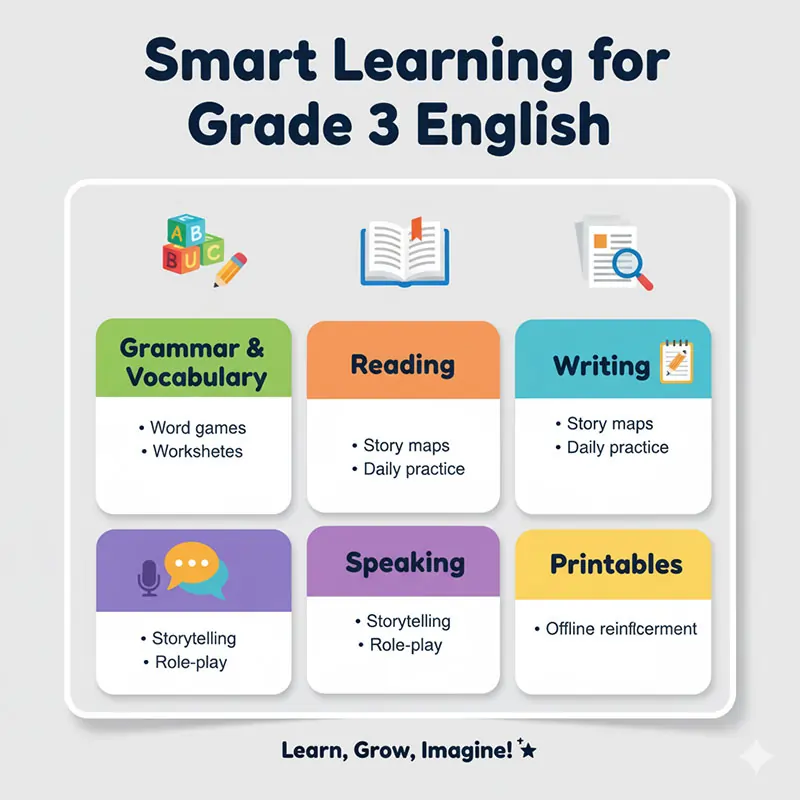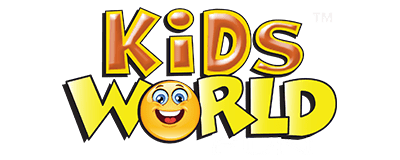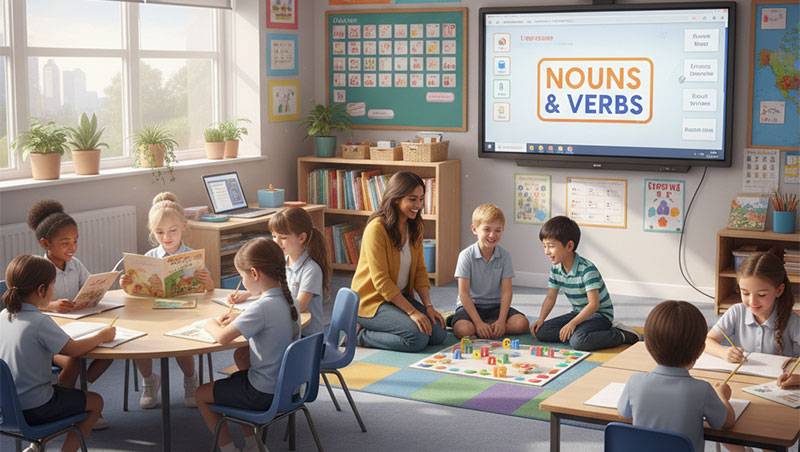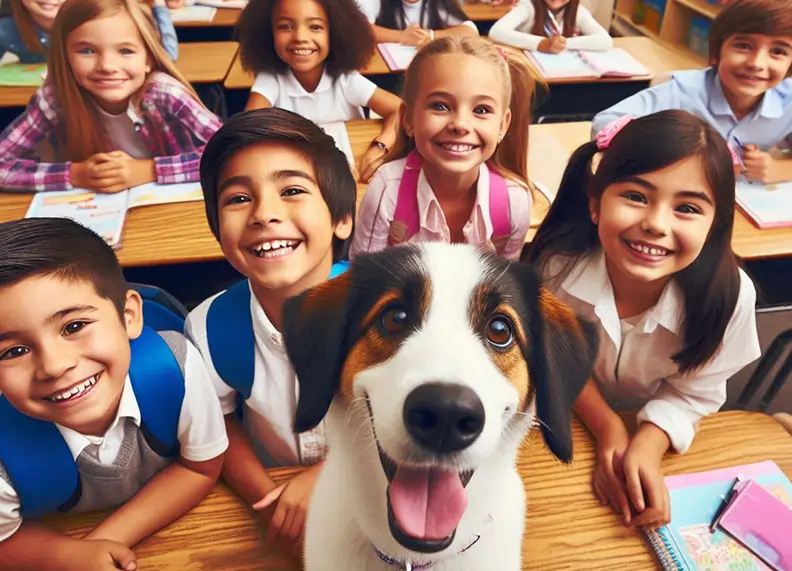Grade 3 English Lessons and Activities for Smart Learning
Learning English is one of the most important things a child can do. In Grade 3, kids start to get better at reading, writing, and talking. They learn new grammar rules, add to their vocabulary, and write essays and stories to express their ideas. Smart ways to learn English include fun activities, pictures, and interactive tools. These make learning English fun and useful.
This guide talks about important English lessons for third graders, fun ways to learn, grammar worksheets, printable materials, tips for understanding what you read, and creative writing activities that will help kids do well.
1. Key Topics for Grade 3 English
Students should be able to talk to each other in a more organized way than just reading and writing by the time they get to Grade 3. These are the main English topics that are usually talked about:
| Main Area | Topics Covered | Learning Outcome |
| Grammar | Nouns, Pronouns, Verbs, Adjectives, Adverbs, Prepositions, Conjunctions, Punctuation, Tenses | Make sentences easier to understand and more organized. |
| Vocabulary | Synonyms, Antonyms, Homophones, Compound Words | Strengthen word knowledge |
| Reading | Short stories, Poems, Fables, Non-fiction passages | Improve comprehension and interpretation |
| Writing | Paragraph writing, Letters, Story writing, Descriptive writing | Encourage creativity and expression |
| Speaking and Listening | Conversations, Recitations, Group discussions | Develop communication confidence |
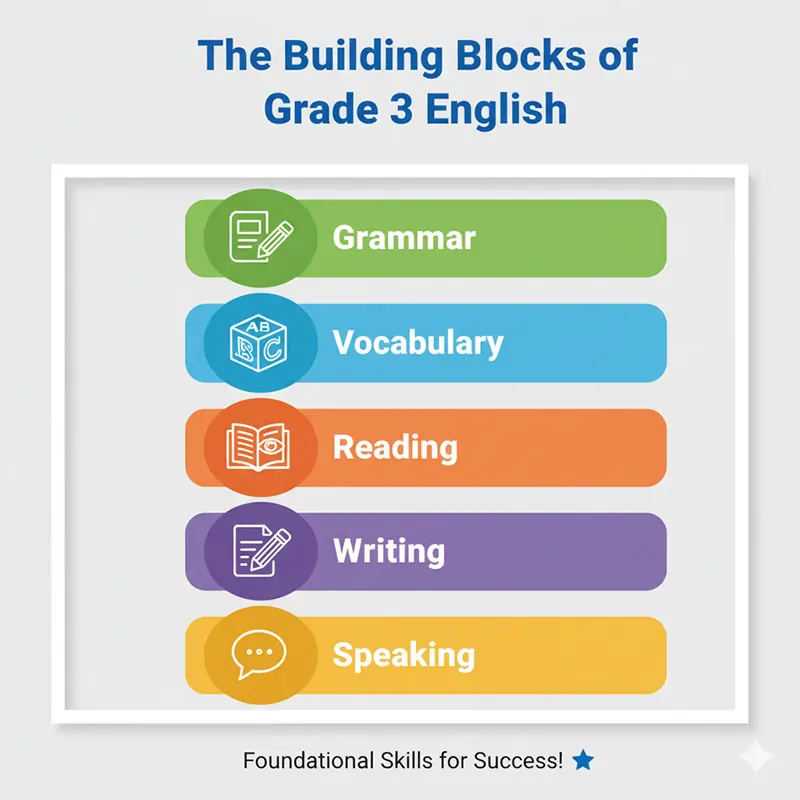
2. Engaging Learning Strategies
Smart learning is all about lessons that are hands-on and use more than one sense to help you remember them. Here are some good ways to get things done:
a. Game-Based Learning
When kids play games like word bingo, spelling races, and grammar puzzles, they want to learn.
For instance, you could have a “Grammar Treasure Hunt” where each clue leads to a part of speech.
b. Storytelling and Role Play
Reading and acting out stories can help students with their pronunciation, fluency, and expression.
c. Visual Aids
Flashcards, charts, and mind maps can help you understand difficult grammar rules better.
d. Technology Integration
There are educational apps and websites that have interactive English lessons for third graders. There are videos, quizzes, and ways to keep track of progress in these lessons.
e. Collaborative Learning
Talking to other people and getting their feedback can help you feel better about yourself and learn more.
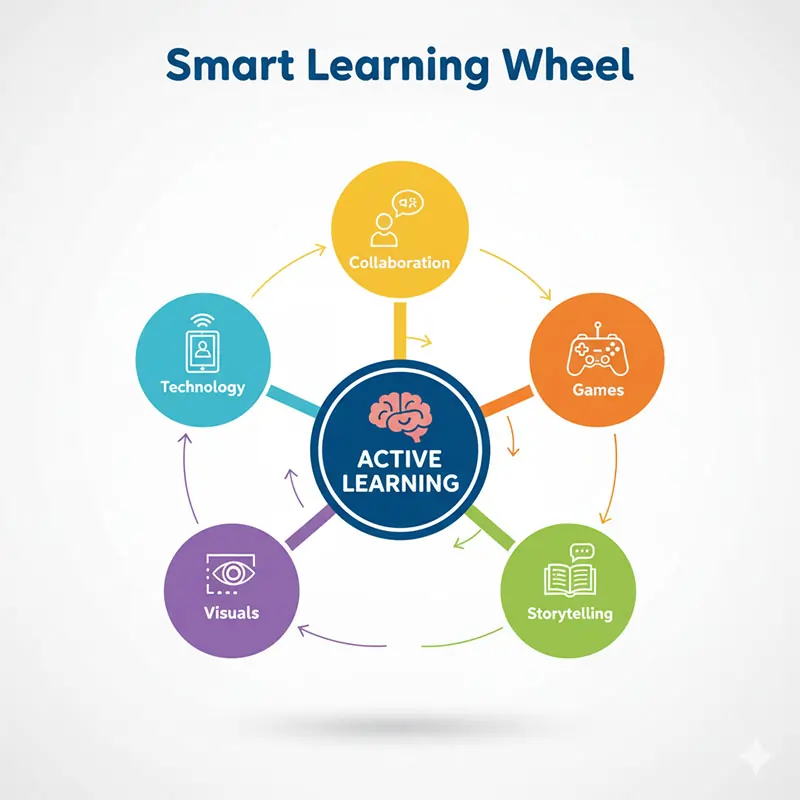
3. Grammar and Vocabulary Exercises
The most important part of any language is grammar, and Grade 3 is the best time to work on these skills. Using grade 3 grammar worksheets on a regular basis helps you be more sure of yourself and accurate.
a. Common Grammar Lessons
| Topic | Example Exercise | Goal |
| Nouns & Pronouns | Look for the nouns in a passage and replace them with pronouns | Know how to change and name words |
| Verbs & Adjectives | Use adjectives to describe things and match verbs to pictures | Learn words that tell you what things are and what they do |
| Adverbs & Prepositions | Put the right prepositions or adverbs in the blanks | Make the sentence’s structure better |
| Tenses | Transform sentences from the past to the present and then to the future | Talk about time |
| Punctuation | Put periods, commas, and question marks where they belong | Make things clear and right |
b. Vocabulary Building Activities
- Word Ladder: Make new words by changing one letter at a time.
- Synonym Hunt: Look for words that have the same meaning as other words.
- Find words that sound the same but mean different things, like “two,” “too,” and “to.”
- Word of the Day Journal: Every day, write down a new word and make a sentence with it.
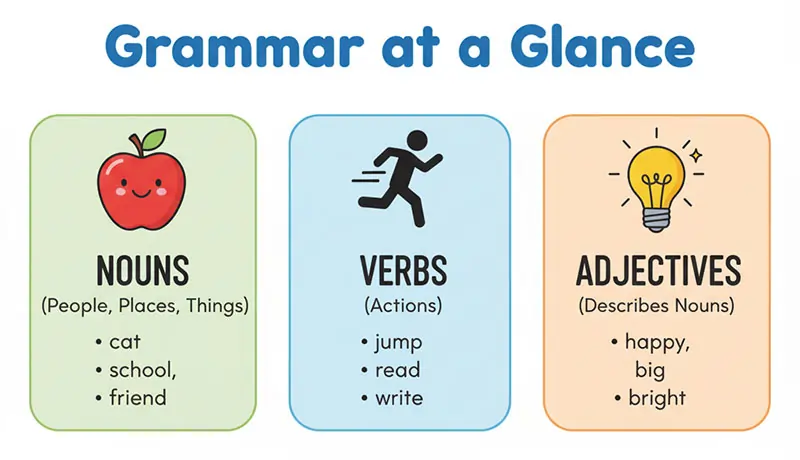
4. Printable Resources
Printable materials are very important for learning outside of school and for going over what you’ve learned in class. Online, it’s easy for teachers and parents to find grammar and reading worksheets for kids in third grade.
Popular Printable Categories
- Grammar Worksheets: They help you learn about punctuation, verb tenses, and parts of speech.
- Worksheets for vocabulary: Work on spelling, synonyms, and antonyms.
- Reading Comprehension Passages are short stories with questions at the end.
- “How to Be a Superhero” and “A Day at the Zoo” are two ideas for creative writing.
- Some of the fun activity sheets are crossword puzzles, word searches, and sentences that are all mixed up.
Benefits of Printables
- Simple to share and carry.
- Encourage people to practice at their own speed.
- Good for doing homework or studying.
- Good for people who learn best by seeing and touching.
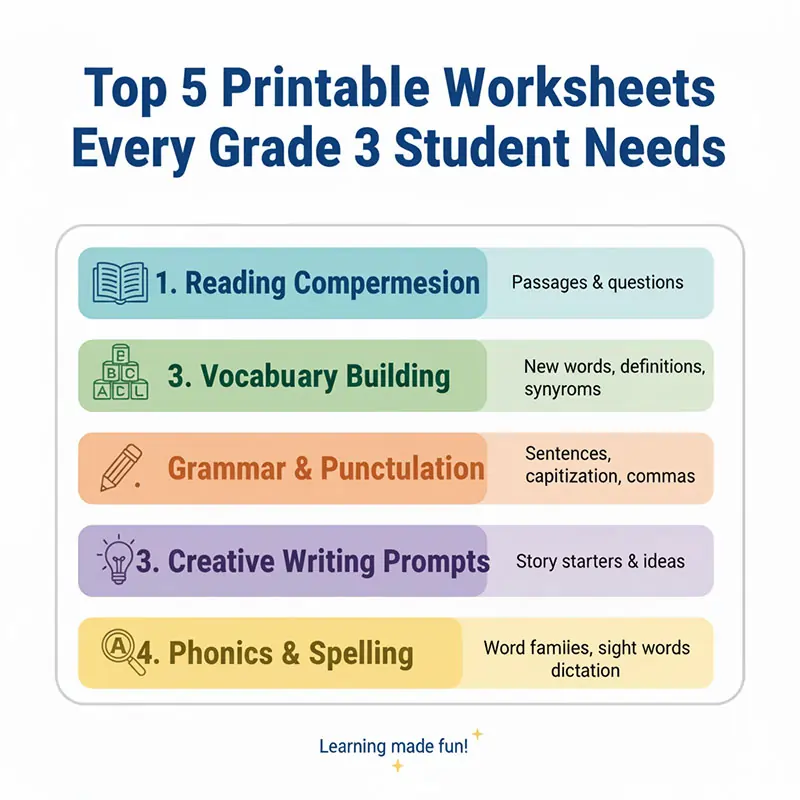
5. Reading Comprehension Tips
Reading comprehension teaches you how to understand, break down, and come to conclusions about what you read. When kids read smartly, they can enjoy stories and learn from them.
a. A daily reading plan
Tell your child to read for 20 minutes every day, even if it’s just facts, stories, or poems.
b. Time to Read Out Loud
Reading out loud can help with pronunciation, fluency, and self-esteem.
c. Using prompts for questions
After you read, ask:
- What came first?
- Who are the main people?
- What did the story teach you?
d. Using pictures to make maps
Tell your students to make story maps, which are pictures that show the beginning, middle, and end of a story.
e. Working on Reading Comprehension
Include passages that have both open-ended and multiple-choice questions after them.
? Example:
The fox and the crow were sitting on a branch with some cheese. The fox said nice things about the crow’s voice, and when the crow sang, the cheese fell.
What kind of trick did the fox use?
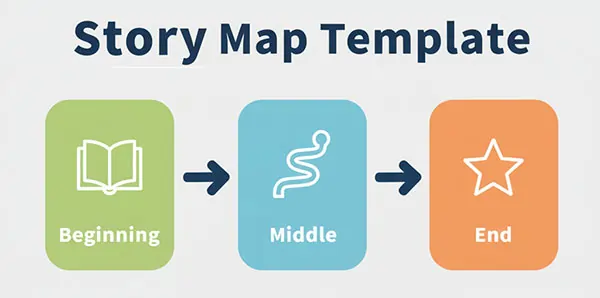
6. Writing and Storytelling
Kids can learn how to think in a structured way and use their imaginations by writing. Here are some things you can do to help third graders get better at telling stories:
a. Types of Writing
| Writing Type | Example Topic | Learning Focus |
| Narrative | “My Favorite Holiday” is what we’re going to learn about | Putting things in order and being imaginative |
| Descriptive | “A Lovely Garden” is a descriptive phrase | Using adjectives and the five senses |
| Persuasive | “Why Reading is Fun” is a piece that tries to convince people | Telling people what you think |
| Letter Writing | “Letter to a Friend” | Tone that is both formal and casual |
| Poetry | “Seasons” | Poetry Imagination and Rhythm |
b. Writing Prompts
- Please tell me about your ideal vacation.
- Please tell me about your favorite cartoon character.
- If you could do magic, what would you do?
c. Making changes and fixing things
To help people edit their own work, use a checklist:
- Are the sentences complete?
- Did I use periods and commas?
- Do all verbs go with the subject?
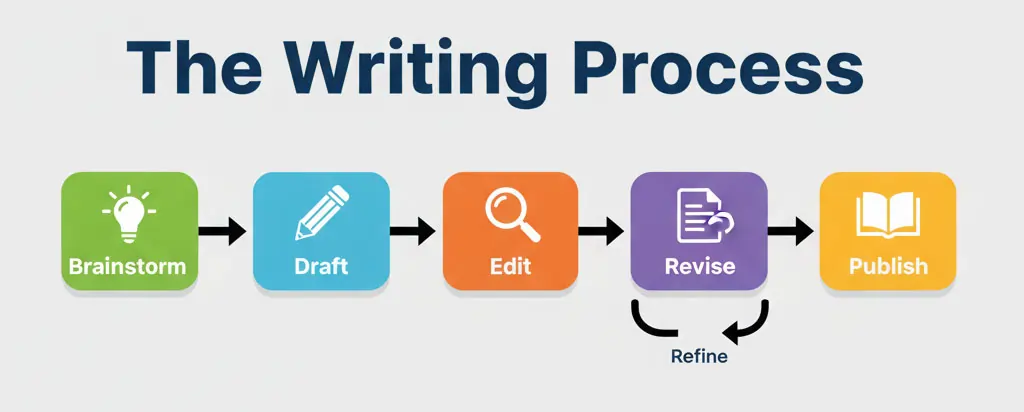
7. Frequently Asked Questions (FAQ)
Q1. What are the most important English lessons for kids in third grade?
Students in grade 3 learn grammar, vocabulary, reading comprehension, and writing in English class. Students learn how to read and write simple paragraphs, as well as how to use punctuation.
Q2: How can I make English lessons more fun for my child?
You can print out grammar worksheets, games, stories, and interactive videos for grade 3. Read, write, and learn through play at different times.
Q3. Do online resources help 3rd graders learn English?
Yes. There are a lot of websites that teach English to third graders for free or for a fee. Kids can learn on their own with these lessons that have quizzes, games, and animations.
Q4. How can I help my child learn new words?
Every day, teach your child new words, use flashcards, and play word games. Tell your child to use the new words in short stories or sentences.
Q5. How often should kids practice their grammar?
You only need a few short sessions each week. It’s better to practice with grade 3 grammar worksheets every day than to do it all at once.
8. Conclusion
Smart learning makes English classes more fun than they used to be. For third graders, this means learning grammar, adding to their vocabulary, and having fun with reading and writing through games, pictures, and being creative.
By using digital tools, printable materials, and hands-on activities together, teachers and parents can make learning fun and useful. This helps kids learn how to talk clearly and think of new things.
Last tip: Get your child interested. Reading new words, sentences, and stories will help them become fluent and confident speakers.
